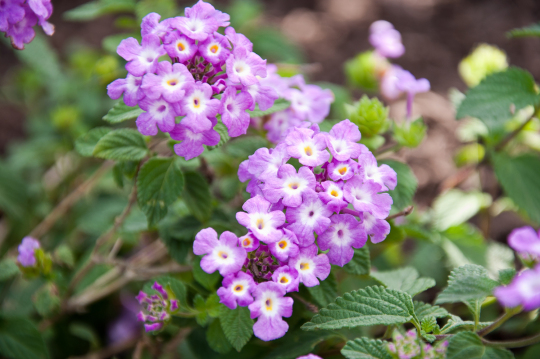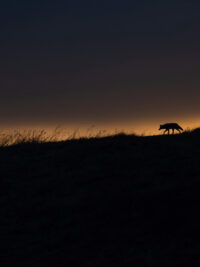On the color wheel, purple is classified as a secondary color. Secondary colors are created by combining two primary colors. Purple is created by combining red and blue. Of course there are many shades of purple depending on the percentages of red and blue in the mix. When we add white to the recipe we get lavender (officially a tint). There are many fabulous drought tolerant plants with lavender flowers.
According to bourncreative.com, “Purple combines the calm stability of blue and the fierce energy of red. The color purple is often associated with royalty, nobility, luxury, power, and ambition.” Jennifer Bourn also tells us that, “lavender is a feminine, graceful, elegant color that has long been associated with refined, wealthy women. While the color purple represents royalty, lavender represents beauty and femininity.”
I have never had a client tell me he or she doesn’t like purple. Most of my clients want purples and lavenders in their garden. Maybe that is because purple tends to uplift us, calm us and encourages our creativity. www.sensationalcolor.com.
Below I’ve listed my favorite garden worthy, water-wise plants with purple or lavender flowers.
Lavandula sp. – Lavender. Both the leaves and flowers of lavender are wonderfully aromatic. Known for its tough, drought-tolerant nature, lavender sports grey-green leaves and striking pale lavender to deep purple elongated, narrow flower clusters on skinny stalks. Lavender typically blooms twice a year – once in late spring and once in fall. There are dozens of cultivars. Some lavenders reach almost 4’x4’ in size. One diminutive cultivar is “Blue River” which tops out at 14”x14”. I especially like some of the mid-sized 2-2.5’ lavenders such as “Munstead” and “Hidcote”. Be careful not to overwater your lavender or it will get leggy and woody. When you dead head your lavenders cut just a tiny bit (1/4”) into the leafy growth to encourage fullness. Bees love this plant! Full-sun. Evergreen.
Salvia clevelandii – Cleveland Sage. Cleveland Sage is a California native grey leafed 4’x4’ shrub that produces spikes with ball shaped, aromatic lavender flowers clusters in late spring and early summer. Like lavender, bees love this plant. I like to wait a while after the blooms are finished to dead-head this plant because the seeds are good food for birds. When you dead head Cleveland Sage be sure to cut the flower stalks back to their base otherwise they will look scraggly. Full sun. Evergreen.
Lantana montevidensis – Purple Trailing Lantana. (Pictured) This lantana displays warm, pinky lavender flowers that bloom nearly year round. It grows about 2’ tall and can spread as much as 10’ wide when it is really happy. It makes a fabulous ground-cover. Lantanas love the sun but can take part shade. Lantanas don’t like cold weather though and show signs of stress at temperatures below 20F. Cut them back in the winter if they look ratty or frost damaged. They will revive when it warms up. Semi-evergreen.
Erysimum “Bowles’ Mauve.” This is a darling, round shaped, sub-shrub that that grows about 2’ tall by 1.5’ wide. It produces 1 ½” clusters of mauve-pink flowers that delight us throughout the spring and summer. They take some water to get established but are drought tolerant after that. They are sometimes a bit fussy about getting established so keep an eye on them after you plant them. This is a butterfly plant. Full sun or part shade.
Other water-wise purple or lavender blooming plants include Erigeron glaucus –Seaside Daisy (part-shade), Iris sp., (sun or part-shade), Salvia leucantha -Mexican Bush Sage (full sun), Limonium perezii – Statice or Sea Lavender (full sun), Nepeta x faassennii – Catmint (full sun or shade) , Penstemon sp. – Beardtongue – many cultivars (full sun to light shade) and , Buddleja – Butterfly Bush (fun sun).
This article is the seventh and final in a series dedicated to drought tolerant plants organized by flower color. Feel free to comment on this article posted in the blog section of my website, wildwillowdesign.com/blog. I appreciate your feedback.






Be First to Comment